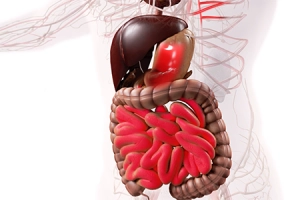High-dosed active lactic acid bacteria
- Contains scientifically documented lactic acid bacteria: Lactobacillus acidophilus (La-5®) and Bifidobacterium lactis (BB-12®)
- A special manufacturing technique ensures the viability of the bacteria in the gut
- Practical for traveling because the product does not require refrigeration
- Suitable for vegetarians
- Small enteric-coated capsules that are easy to swallow
BioActive Culture
| 1 capsule contains |
|---|
| Freeze dried cultures of lactic acid-producing bacteria: |
| Lactobacillus acidophilus (La-5®) and Bifidobacterium lactis (BB-12®) with at least 4 billion live bacteria in each capsule |
| BB-12® and La-5® are registered trademarks of Chr. Hansen. |
Product Facts
Directions:
1-3 capsules daily unless advised otherwise.
Do not exceed the recommended daily dosage.
Do not chew the capsules but swallow them whole, preferably during/after meals.
Dietary supplements should not replace a varied diet.
A healthy lifestyle and a varied diet are important for maintaining good health.
Storage:
Dark, dry and at room temperature. Keep out of reach of young children.
A healthy lifestyle and a varied diet are important for maintaining good health.
Ingredients:
Dextrose,
bacterial preparation (Lactobacillus acidophilus, bifidobacterium lactis) (milk),
capsule wall: hydroxypropyl methylcellulose,
anti-caking agent: magnesium salts of fatty acids,
colour: calcium carbonate.
What is BioActive Culture - Probiotics?
BioActive Culture contains small, easy-to-swallow vegetable capsules each with 4 billion live bacteria from two strains of gut-friendly lactic acid bacteria: Lactobacillus acidophilus (La-5®) and Bifidobacterium lactis (BB-12®).
bacteria: Lactobacillus acidophilus (La-5®) and Bifidobacterium lactis (BB-12®).
No gluten, MSG, or milk
The product does not contain gluten or MSG (mono sodium glutamate). We are not able to guarantee that the product does not contain traces of milk protein, however. Due to this minor uncertainty, the product is not recommended for people with allergies to milk protein. The product does not contain milk.
Vegetarian- and friendly
BioActive Culture capsules can be used by vegetarians. The preparation is suitable for ovo-lacto vegetarians as well as lacto-vegetarians.
Use of BioActive Culture
BioActive Culture capsules are particularly useful on trips to areas of the world where one is exposed to a foreign bacterial flora. It is stable at room temperature and does not require refrigeration. Start with BioActive Culture a few weeks before traveling to your destination. You can also take BioActive Culture in situations where your intestinal flora is out of balance. BioActive Culture can be used on a daily basis to help maintain a normal intestinal flora.
BioActive Culture and fiber
In order to give the intestinal flora the best living conditions, one should eat a diet rich in dietary fibre and healthy carbohydrates.
Effective protection of the bacteria
Many probiotic products fail to deliver a sufficient quantity of viable bacteria to the small intestine because the bacteria are killed off by the strong stomach acid before they reach their destination. In order to ensure that the lactic acid bacteria are still alive when they reach the small intestine, it is vital to protect them from the factors that can damage them. The bacteria must be protected from the moment they are manufactured and encapsulated until they reach the consumer and are ingested. In fact, the protection of the bacteria must be that effective it can guarantee that the bacteria remain alive and active on their passage through the strong stomach acid into the intestines, where they are needed. The lactic acid bacteria in BioActive Culture are designed to survive the acidic stomach environment. Thanks to a special cryo-technology, the bacteria are kept alive, albeit in a dormant state. They are effetively shieleld until they reach the small intestine and are released - unharmed and ready to action.
The method
The lactic acid bacteria encapsulated in the BioActive Culture capsule have been mixed and freeze-dried with gel-forming polysaccharides that are impervious to the low pH value of the stomach. Once the capsules are in the stomach, the capsules dissolve and the granulate inside swells to form an insoluble gel matrix that envelops and protects the bacteria. Furthermore, the bacteria are very acid-resistant. When the gastric content with the lactic acid bacteria reaches the alkaline surroundings of the small intestine, the gel matrix dissolves, relasing its load of live lactic acid bacteria. This technique enables the live lactic acid bacteria to pass through the acidic environment of the stomach and reach the small intestine in a viable and fully functional form.
The bacteria in BioActive Culture don't cross through the intestinal wall but stay to colonize the intestine.
About lactic acid bacteria
Our intestinal flora (also called intestinal microbiome) is established at birth and continues to change throughout life. When we are infants, our intestinal flora mainly consists of bifidobacteria. Mother's milk contains prebiotic substances that promote the growth of these bacteria.
intestinal flora mainly consists of bifidobacteria. Mother's milk contains prebiotic substances that promote the growth of these bacteria.
An adult has around 100 billion bacteria per gram of intestinal content in the colon. Lactic acid bacteria represent an important share of this flora. The total weight of the live bacteria in a normal gut amounts to approx. 1.5 kg.
Exposed intestinal flora
Some people have a lower-than-average bacterial count in their gut. The number of lactic acid bacteria in our gut are adversely affected by factors such as smoking, alcohol, medication (especially antibiotics), pathogens (from food or air), and stress. Also, our eating habits affect the quantity and composition of our intestinal flora.
Functions of the intestinal flora
Lactic acid bacteria have many different functions in the intestine. They help break down dietary starch and fiber, and they produce certain vitamins and short-chained fatty acids. They communicate with the many nerve cells, immune cells, and hormone-producing cells in the gut. They also form a multitude of bioactive compounds that enter the bloodstream and affect our biology in numerous ways.

